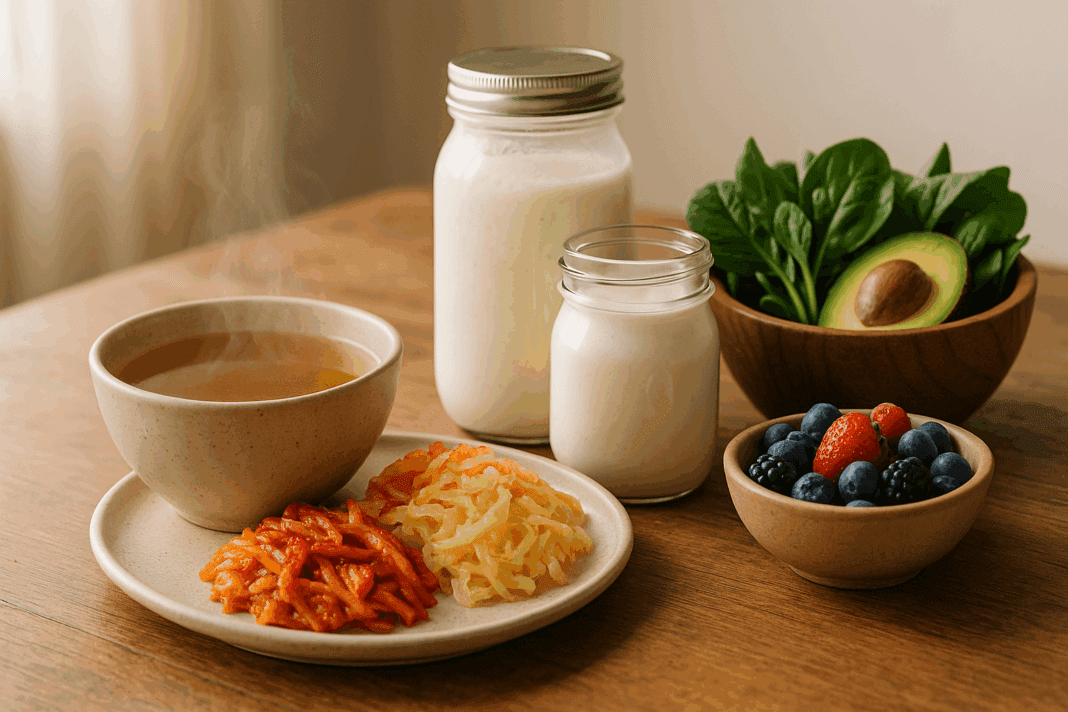In recent years, digestive health has moved to the forefront of nutritional science and holistic wellness. Many individuals who struggle with chronic gastrointestinal discomfort, autoimmune flare-ups, fatigue, and even skin issues are beginning to realize that the root of these problems often lies within the gut. As we continue to explore the critical role that the gut microbiome plays in regulating immune response, nutrient absorption, and mental health, it’s become increasingly clear that the best diet to heal gut function naturally must be grounded in both scientific rigor and practical, nourishing strategies. Healing the gut is not a quick fix but rather a journey that involves repairing the integrity of the intestinal lining, rebalancing gut flora, and eliminating inflammatory triggers through intentional food choices.
You may also like: The Ultimate Guide to Gut Healthy Meals: Best Meals for Gut Health and Nourishing Recipes You’ll Love
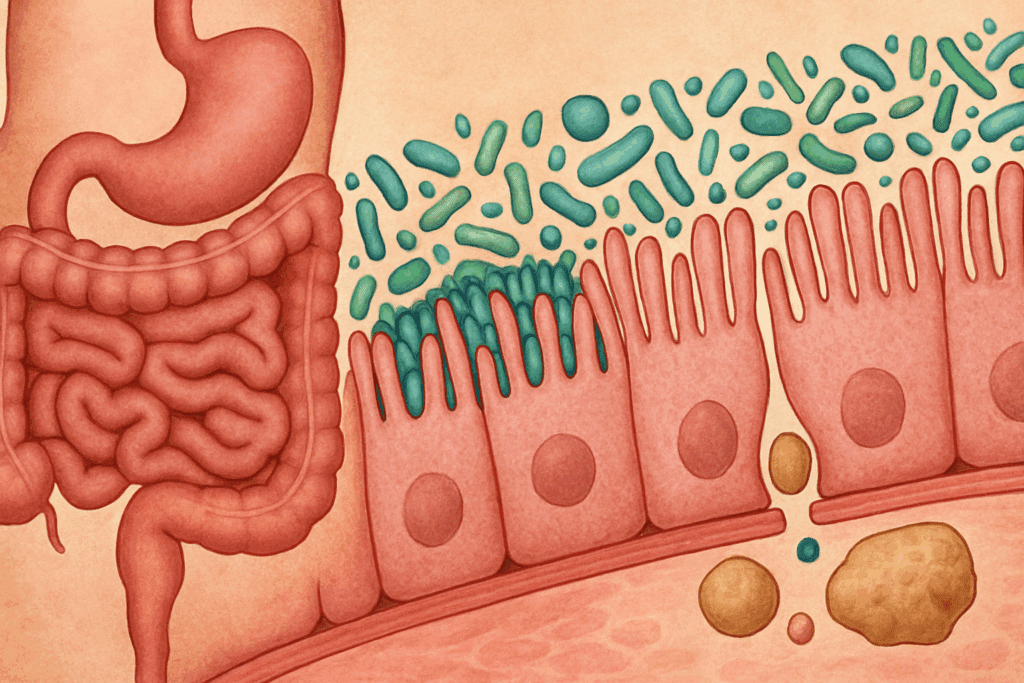
Understanding Gut Health and the Gut-Lining Connection
The digestive tract is more than just a passageway for food; it’s a dynamic and complex ecosystem that houses trillions of microorganisms collectively known as the gut microbiota. These bacteria perform vital functions, such as synthesizing vitamins, breaking down food, modulating hormones, and maintaining the mucosal barrier that lines the intestinal walls. When this barrier is compromised, a condition known as increased intestinal permeability—often referred to as “leaky gut”—can occur. This dysfunction allows partially digested food, toxins, and pathogens to pass into the bloodstream, triggering systemic inflammation and immune responses that may contribute to a wide range of chronic conditions.
Many people seek to understand how to repair stomach lining naturally without resorting to medication. This typically involves eliminating foods that aggravate the gut lining and incorporating healing foods rich in fiber, polyphenols, amino acids, and beneficial microbes. The focus is on reinforcing the epithelial barrier, calming inflammation, and restoring microbial diversity through a thoughtful, holistic approach.
Why the Best Diet to Heal Gut Matters More Than Ever
The prevalence of processed foods, artificial additives, excess sugars, and antibiotic overuse in modern society has led to a marked decline in gut health across the population. A compromised gut can affect everything from mood and cognitive function to metabolic efficiency and skin clarity. Emerging research also links gut imbalances to autoimmune diseases like celiac disease, Crohn’s disease, and rheumatoid arthritis, underscoring the need for dietary intervention.
Adopting the best diet to heal gut tissues can help reverse or mitigate many of these problems. However, there is no one-size-fits-all blueprint; instead, a leaky gut cure diet must be tailored to individual sensitivities, underlying conditions, and nutritional needs. Still, general principles hold: avoiding inflammatory foods, prioritizing whole and nutrient-dense options, and introducing gut-healing supplements when necessary can create a foundation for transformative health improvements.
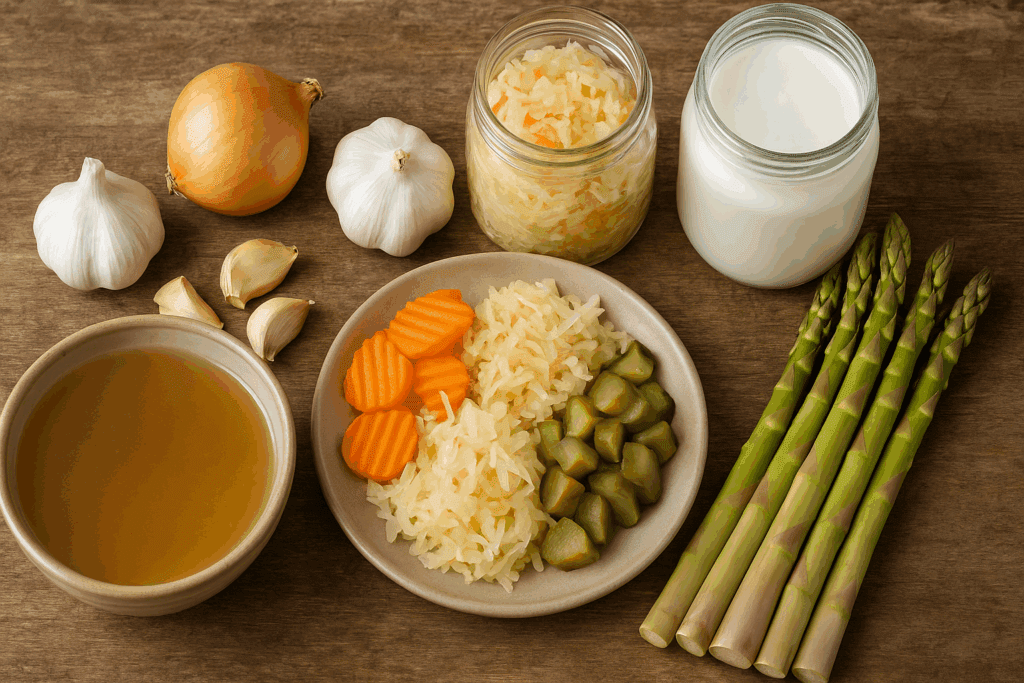
The Foundation of a Gut Healing Diet
To begin healing the gut, it is essential to first remove common irritants that compromise intestinal integrity. Gluten, dairy, refined sugars, alcohol, artificial sweeteners, and processed seed oils are among the worst foods for leaky gut. These substances can provoke inflammation, disrupt the microbiome, and damage the tight junctions between intestinal cells. While not everyone reacts the same way to these foods, a temporary elimination protocol can help identify which items contribute to digestive distress.
Replacing these irritants with nourishing alternatives is the next step in a gut healing diet. Bone broth, rich in collagen, gelatin, and amino acids like glutamine, supports mucosal repair. Fermented foods such as kimchi, sauerkraut, kefir, and yogurt introduce beneficial bacteria that help repopulate the gut. Prebiotic foods like garlic, onions, leeks, and asparagus provide fuel for these microbes, encouraging diversity and resilience in the gut flora. Together, these elements form a synergistic framework to foster repair and balance.
Implementing the Best Diet to Heal Gut In Everyday Life
For those wondering how to implement the best diet to heal gut integrity in practical terms, the key lies in creating a sustainable, enjoyable eating pattern. Begin each day with a gut-supportive breakfast that might include chia seed pudding, a smoothie with collagen peptides and fiber-rich berries, or scrambled eggs with avocado and sautéed greens. Lunch and dinner should focus on colorful vegetables, clean protein sources like wild-caught fish or pasture-raised poultry, and anti-inflammatory fats from olive oil, ghee, or coconut oil.
Snacking can also be gut-friendly. Try apple slices with almond butter, cucumber slices with hummus, or a small bowl of sauerkraut. Hydration plays a vital role as well; sipping herbal teas such as ginger, licorice root, and peppermint can soothe the digestive tract, while plain filtered water aids in flushing toxins and maintaining mucosal hydration. Over time, these consistent habits reinforce the body’s natural healing processes and support long-term gastrointestinal health.
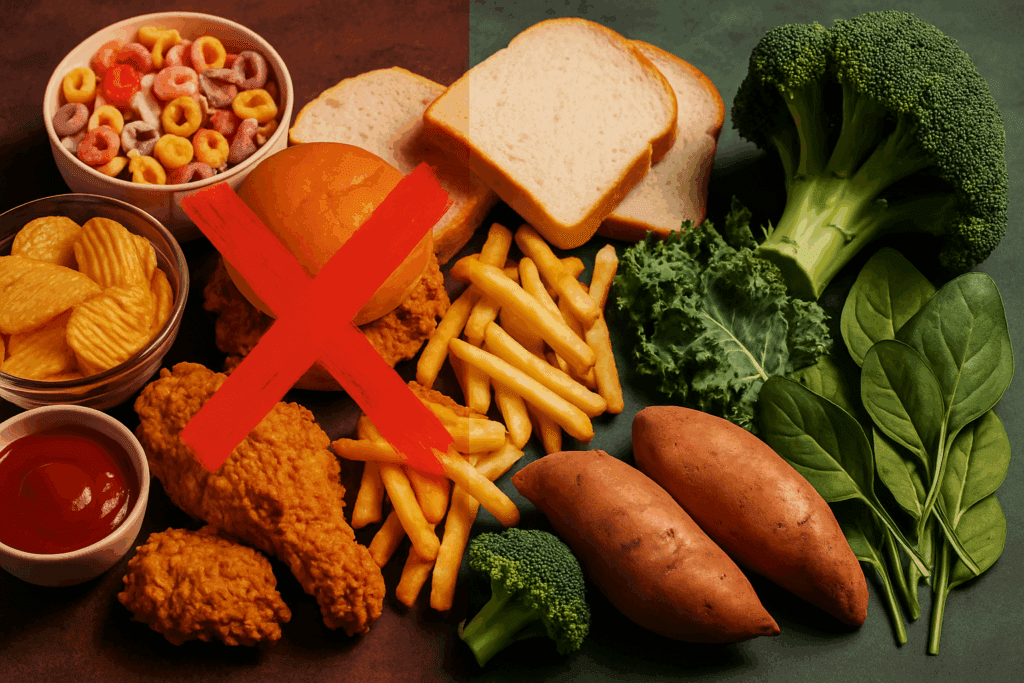
Identifying and Avoiding the Worst Foods for Leaky Gut
While it’s important to know what to eat, understanding what to avoid is equally critical. Certain foods are notorious for undermining gut health. Highly refined carbohydrates, such as white bread, pastries, and sugary cereals, fuel harmful bacteria and yeast overgrowth. Industrial seed oils, including soybean, corn, and canola oil, are high in omega-6 fatty acids that may drive inflammation when consumed in excess. Emulsifiers and preservatives in packaged foods can alter the mucus layer that protects the gut lining.
Food sensitivities are another culprit. Gluten and casein, found in wheat and dairy respectively, can trigger immune reactions in susceptible individuals. Even seemingly healthy foods like nightshades (tomatoes, eggplants, peppers) or legumes (beans, lentils) may cause irritation in some people with compromised gut linings. By systematically eliminating and then reintroducing suspect foods, individuals can develop a personalized list of foods to avoid on leaky gut protocols, promoting symptom relief and deeper healing.

Crafting a Leaky Gut Diet Plan That Works
Building an effective leaky gut diet plan involves more than just a list of do’s and don’ts; it requires an understanding of how foods interact with one another and the digestive system. Start by creating meals that include all three macronutrients in balanced proportions. A plate with grilled salmon (protein), quinoa (complex carbohydrates), and steamed broccoli (fiber and antioxidants) not only satisfies hunger but also supports gut regeneration. Incorporate variety to avoid nutrient deficiencies and maintain motivation.
Meal planning and batch cooking can make adherence easier, especially during the initial phase of a leaky bowel diet. Prepare large batches of bone broth, vegetable soups, and grain-free muffins for quick, healing meals. Keep a food journal to track symptoms and progress, noting any correlations between diet and flare-ups. Over time, this approach transforms from a rigid protocol into a lifestyle that intuitively supports digestive wellness.
The Science Behind a Leaky Gut Cure Diet
Scientific literature continues to explore the relationship between diet and gut barrier function. Studies have shown that certain nutrients, such as zinc, omega-3 fatty acids, and L-glutamine, play essential roles in maintaining and repairing the epithelial lining of the intestines. Polyphenols found in berries, green tea, and dark chocolate exert antioxidant effects that combat oxidative stress in the gut. Fiber, especially soluble types found in oats, apples, and flaxseed, helps regulate bowel movements and feeds beneficial bacteria.
The inclusion of fermented foods is supported by data showing their ability to modulate the immune system and enhance microbial diversity. Meanwhile, diets high in processed meats, saturated fats, and refined sugar are consistently linked to gut dysbiosis and inflammation. By focusing on nutrient-dense, minimally processed foods, the leaky gut cure diet offers a compelling, evidence-based solution for improving both digestive and systemic health.
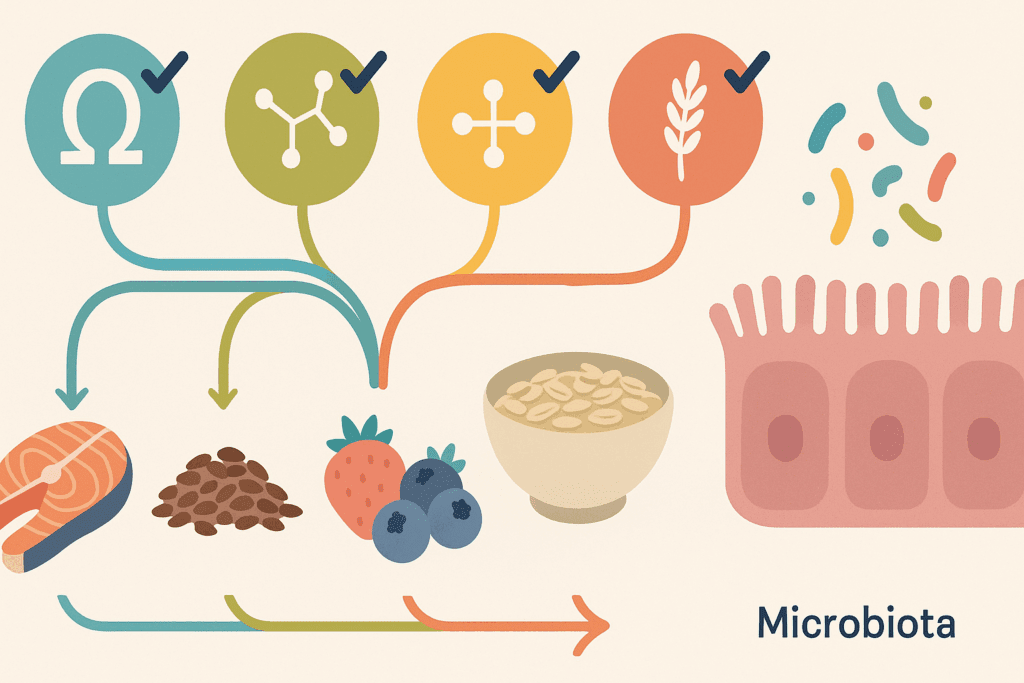
Integrating Holistic Supplements to Support Gut Repair
While diet forms the cornerstone of gut healing, holistic supplements can provide valuable support, especially during periods of active inflammation or severe dysbiosis. L-glutamine, an amino acid that serves as fuel for intestinal cells, is widely used to repair stomach lining naturally. Zinc carnosine helps strengthen the mucosal barrier, while deglycyrrhizinated licorice (DGL) soothes irritation and reduces acid reflux. Probiotics can reintroduce beneficial strains, but choosing the right formulation based on individual needs is crucial.
Digestive enzymes may assist those with impaired nutrient absorption, and herbal antimicrobials like oregano oil or berberine can be used short-term to rebalance gut flora. It’s essential to consult with a healthcare provider before beginning supplementation to ensure safety, appropriate dosing, and compatibility with other interventions. When used wisely, these tools can accelerate recovery and reinforce the benefits of a gut healing diet.
Foods to Repair Gut Health and Promote Resilience
Among the most powerful tools in gut healing are specific foods that offer direct support to the intestinal lining and microbiome. Bone broth is a staple in this category due to its rich supply of gelatin, glycine, and glutamine—all of which help seal and soothe the gut wall. Fatty fish like salmon and mackerel provide anti-inflammatory omega-3s, while fermented vegetables offer probiotics and enzymes to improve digestion. Leafy greens and cruciferous vegetables supply fiber, folate, and antioxidants.
Colorful fruits, such as berries, pomegranates, and kiwi, deliver polyphenols that protect gut tissue from oxidative stress. Coconut oil, known for its antimicrobial properties, can reduce bacterial overgrowth when used in moderation. Integrating these healing foods into daily meals not only supports recovery but also builds long-term resilience against future digestive challenges. Their effects are cumulative and synergistic, reinforcing the entire digestive ecosystem.

How to Sustain the Best Diet to Heal Gut in the Long Term
Maintaining the best diet to heal gut health over time requires a shift in mindset from temporary restriction to empowered nourishment. Rather than viewing dietary changes as deprivation, it is helpful to focus on the abundance of healing options available. Experimenting with new recipes, exploring ethnic cuisines that emphasize fermented and fiber-rich foods, and cultivating gratitude for the body’s ability to heal can transform the experience.
Building a supportive environment also contributes to success. Share meals with family members, join online communities for recipe swaps and encouragement, and work with a nutritionist or functional medicine practitioner for ongoing guidance. Stress management is a key aspect often overlooked; practices like meditation, yoga, and mindful eating can significantly influence gut-brain axis communication and enhance the effectiveness of dietary efforts. In this way, a gut healing diet becomes a sustainable, enriching part of a holistic wellness journey.
Frequently Asked Questions: Advanced Insights on Gut Healing and Diet
How does emotional stress impact the effectiveness of a gut healing diet?
While diet plays a foundational role in gut repair, emotional and psychological stress can significantly undermine the healing process. Chronic stress triggers the release of cortisol and other stress hormones that can compromise the gut barrier, increase intestinal permeability, and alter the composition of the gut microbiota. This creates a physiological environment that resists healing, even when one is adhering to the best foods for leaky gut. Incorporating stress-reduction techniques such as mindfulness meditation, deep breathing, and biofeedback can enhance the outcomes of any gut healing diet. Over time, the combined influence of psychological and nutritional interventions provides a more sustainable and holistic path to digestive wellness.
Can the best diet to heal gut also benefit individuals with mood disorders like anxiety or depression?
Emerging research in the field of nutritional psychiatry suggests a strong gut-brain axis that links digestive health with mood regulation. Following the best diet to heal gut function can support the production of neurotransmitters like serotonin and GABA, both of which play critical roles in mental stability and emotional well-being. By promoting microbial diversity and reducing systemic inflammation, a leaky gut diet plan may alleviate mood swings, anxiety, and depressive symptoms. Foods to repair gut health often overlap with those that benefit neurological pathways, making dietary changes an effective adjunct to mental health interventions. This intersection of gut and mental health represents an exciting frontier in personalized, integrative medicine.
What are the most overlooked foods to avoid on leaky gut protocols?
While gluten and dairy are commonly eliminated, several other ingredients are frequently overlooked yet detrimental to gut health. Emulsifiers found in processed foods, such as polysorbate 80 and carboxymethylcellulose, can disrupt the gut lining and microbial balance. Natural sweeteners like agave syrup, often marketed as healthy, are high in fructose and can aggravate a leaky bowel diet. Even legumes and grains that are not properly soaked or sprouted can be hard to digest due to antinutrients like lectins and phytic acid. Alcohol, even in small quantities, remains one of the worst foods for leaky gut due to its direct inflammatory impact. Eliminating these hidden irritants can dramatically enhance the effectiveness of any gut healing diet.
How can athletes adapt the leaky gut cure diet to meet higher energy demands?
Athletes often require more calories, protein, and carbohydrates than the average individual, which can make restrictive protocols challenging. However, a leaky gut cure diet can be adapted by incorporating easily digestible, nutrient-dense options like grass-fed meats, starchy vegetables, and soaked gluten-free grains. Pre-workout nutrition might include bone broth-based smoothies, while post-exercise meals can focus on anti-inflammatory proteins and fats to support recovery. Probiotic-rich fermented foods can also aid digestion and immune resilience, critical for athletes under constant physical stress. With careful planning, athletic performance and gut healing can coexist synergistically.
What are effective ways to measure progress while following the best diet to heal gut?
Beyond symptom relief, progress can be tracked through a variety of qualitative and quantitative methods. Improvements in skin clarity, energy levels, sleep quality, and mental focus often indicate that the best diet to heal gut health is working. Laboratory tests such as zonulin levels, stool analysis, or organic acid testing can provide more concrete insights into microbiome shifts and gut permeability. Maintaining a food and symptom journal also allows individuals to correlate dietary changes with specific health outcomes. Over time, increased tolerance to previously reactive foods can signal mucosal recovery. These markers, taken together, offer a comprehensive view of healing.
Does intermittent fasting enhance the effects of a gut healing diet?
Intermittent fasting has shown potential benefits for gut health by allowing the digestive system time to rest and repair. During fasting windows, the body activates autophagy, a cellular cleanup process that can reduce inflammation and enhance gut lining regeneration. When paired with a gut healing diet, intermittent fasting may accelerate mucosal healing and microbial balance. However, this approach isn’t suitable for everyone—those with adrenal fatigue or eating disorders should proceed cautiously. For most, a gentle fasting rhythm, such as a 12- to 14-hour overnight fast, provides a sustainable entry point.
What are some practical travel tips for maintaining a leaky gut diet plan?
Traveling can pose a significant challenge for those adhering to a leaky gut diet plan, especially when faced with limited food options and unfamiliar ingredients. Preparation is key: pack non-perishable staples such as collagen protein powder, dehydrated bone broth packets, and activated nuts or seeds. When dining out, opt for grilled proteins, steamed vegetables, and request sauces on the side to avoid hidden gluten or dairy. Apps that identify gluten-free or paleo-friendly restaurants can also be helpful. Staying hydrated and managing jet lag with circadian-friendly meals can prevent digestive flare-ups. With foresight, travel does not have to disrupt your gut healing momentum.
How long does it typically take to see results from a leaky bowel diet?
The timeline for gut healing varies widely depending on the severity of symptoms, underlying conditions, and consistency of dietary implementation. Some individuals notice symptom relief within a few weeks, particularly with the elimination of the worst foods for leaky gut. However, true mucosal regeneration and microbial balance may take several months or longer. Factors such as stress levels, sleep quality, and use of supportive supplements like L-glutamine or probiotics can also influence recovery speed. A phased approach that evolves with the body’s needs often yields the most sustainable outcomes.
Is there scientific support for herbal therapies in a gut healing protocol?
Yes, several herbs have demonstrated gut-healing properties in both traditional medicine and emerging scientific research. Slippery elm and marshmallow root contain mucilaginous compounds that coat and soothe the digestive tract. Turmeric’s active compound, curcumin, has anti-inflammatory and antioxidant effects that support intestinal integrity. Licorice root, particularly in its deglycyrrhizinated form, may help reduce gastric irritation and enhance mucosal resilience. When used alongside a gut healing diet, these botanicals can enhance efficacy and provide symptomatic relief. As always, herbal protocols should be discussed with a healthcare provider to avoid contraindications.
Maintaining the Best Diet to Heal Gut During Social Events and Holidays
Navigating social settings while maintaining the best diet to heal gut can be one of the more emotionally challenging aspects of the journey. Planning ahead by bringing a gut-friendly dish to share can ease social pressures while ensuring there’s something safe to eat. Communicating dietary needs respectfully to hosts or restaurant staff helps avoid awkward surprises. Developing a script or mental framework for handling offers of food you need to decline can reduce stress and feelings of isolation. With time, friends and family often become more accommodating, especially when they witness the health improvements that stem from your commitment. These situations provide opportunities not only for advocacy but also for deepening one’s relationship with food as a form of empowered self-care.
Conclusion: Empowering Lasting Wellness with the Best Diet to Heal Gut Naturally
Choosing the best diet to heal gut naturally is more than a trend—it is a life-enhancing decision rooted in both scientific evidence and experiential wisdom. By eliminating harmful foods, embracing nourishing ingredients, and supporting the body with strategic supplements and lifestyle changes, individuals can unlock powerful improvements in digestive function, immunity, and overall vitality. Healing the gut does not happen overnight, but with patience, consistency, and a commitment to self-care, profound transformation is possible.
As we gain a deeper understanding of the gut as a central hub of health, it becomes clear that food is not just fuel—it is medicine, information, and a daily opportunity to support well-being from the inside out. Whether you are navigating chronic illness, seeking greater energy, or simply striving for optimal health, the journey toward gut healing begins with informed choices and continues with empowered action. The best diet to heal gut naturally is ultimately one that is tailored to your body, grounded in whole foods, and sustained by a commitment to long-term wellness. In this pursuit, the wisdom of holistic nutrition meets the rigor of modern science, offering hope, healing, and a path forward toward true digestive vitality.
Further Reading:
Leaky Gut Diet: What to Eat and What to Avoid
10 Best and Worst Foods for Leaky Gut, According to Dietitians

